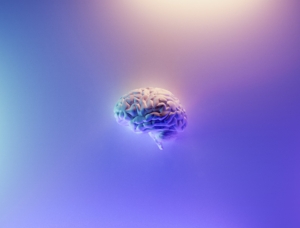The Healing Power of Horses
 In September, Colorado Recovery teamed up with the Colorado Therapeutic Riding Center (CTRC) in Longmont—the oldest therapeutic riding center in the Centennial State which has been operating since 1980.
In September, Colorado Recovery teamed up with the Colorado Therapeutic Riding Center (CTRC) in Longmont—the oldest therapeutic riding center in the Centennial State which has been operating since 1980.
Equine-assisted therapy incorporates horses into the therapeutic process, offering a valuable additional service to Colorado Recovery clients. People engage in activities such as riding, grooming, feeding, and leading a horse while being supervised by a mental health professional.
Carrie Wells has been organizing the equine therapy group for Colorado Recovery since the group started in late summer. Wells holds an MS in applied counseling psychology and has a broad range of experience including 12 years of working with community mental health specifically focused on working with adults in a transitional residence who struggled with persistent mental illness. Wells is also a trained equine therapist which makes her the perfect liaison with CTRC.
Excursions to the riding center usually take three hours out of the day and although Wells does not conduct the sessions herself, observing clients with the horses yields valuable feedback for her.
If the horse reacted in a certain way, she can ask the client how that made them feel. “Putting the halter on, is that something that resonate with you in your life,” she may inquire. “It’s the kind of thing that I may key into, based on my own training as an equine therapist.”
It’s a valuable experience for clients to be a little bit out of their comfort zone and out in nature. “Horses are mirrors to people and you can observe a whole lot of stuff when you are working with those animals,” explains Wells.
On their first series of visits to CTRC in Longmont, Colorado Recovery clients got to watch the
herd and observe how the horses interact. Wells prompts her clients to decode the animals’ behavior: “Why do you think they are doing that?” she would ask them. “That’s always very interesting for the clients, to learn about the behavior of the horses. By the third visit, clients got to halter the horses, then learned how to groom a horse.”
Some clients are quickly at ease with all of these activities while others may take a little longer to get comfortable. “There’s a whole range of responses,” says Wells. “On later visits they got to lead the horses—we even created an obstacle course and led the horses through it.”
So far, there have only been a few occasions where people actually got to sit on a horse. Equine-assisted psychotherapy does not necessarily involve riding because the aim is to help clients learn about themselves and others, while processing or discussing feelings and behaviors. The goal is to help clients in social, emotional, cognitive, or behavioral ways.
Equine therapy has been a very successful addition to Colorado Recovery’s already broad offer. Our treatment program aims to empower adults with mental illness, and those who support them, with an unrelenting optimism for recovery, purposeful involvement in the community, and an enhanced sense of meaning in life.
Our treatment facility provides the services needed to address schizophrenia, bipolar disorder, and other serious mental illnesses which are specific to each individual. Call us at 720-218-4068 to discuss treatment options for you or the person you would like to help.


 When you take a brain tissue sample, all that your analysis generally shows you is an average for all the cell types present. And since there are a whole lot of different cell types in our brain, you get a kind of cell soup, which makes it difficult if not impossible to tell the cells apart, let alone study them.
When you take a brain tissue sample, all that your analysis generally shows you is an average for all the cell types present. And since there are a whole lot of different cell types in our brain, you get a kind of cell soup, which makes it difficult if not impossible to tell the cells apart, let alone study them. “Is there a link between schizophrenia and dementia?” asked Marc Lener, MD, in an article for
“Is there a link between schizophrenia and dementia?” asked Marc Lener, MD, in an article for  “Problems abound in defining schizophrenia,” wrote the late Colorado Recovery founder
“Problems abound in defining schizophrenia,” wrote the late Colorado Recovery founder  Colorado Recovery has teamed up with the
Colorado Recovery has teamed up with the  Nauman Hanif Taj, MD, is the new medical director at Colorado Recovery. Dr. Taj has a long, impressive track record as a board-certified adult psychiatrist.
Nauman Hanif Taj, MD, is the new medical director at Colorado Recovery. Dr. Taj has a long, impressive track record as a board-certified adult psychiatrist.  Traditional approaches to treating psychosis and other serious mental health conditions frequently involve hospitalization and the prescription of powerful medications. Critics argue they are often ineffective and involve the risk of serious adverse effects.
Traditional approaches to treating psychosis and other serious mental health conditions frequently involve hospitalization and the prescription of powerful medications. Critics argue they are often ineffective and involve the risk of serious adverse effects.

